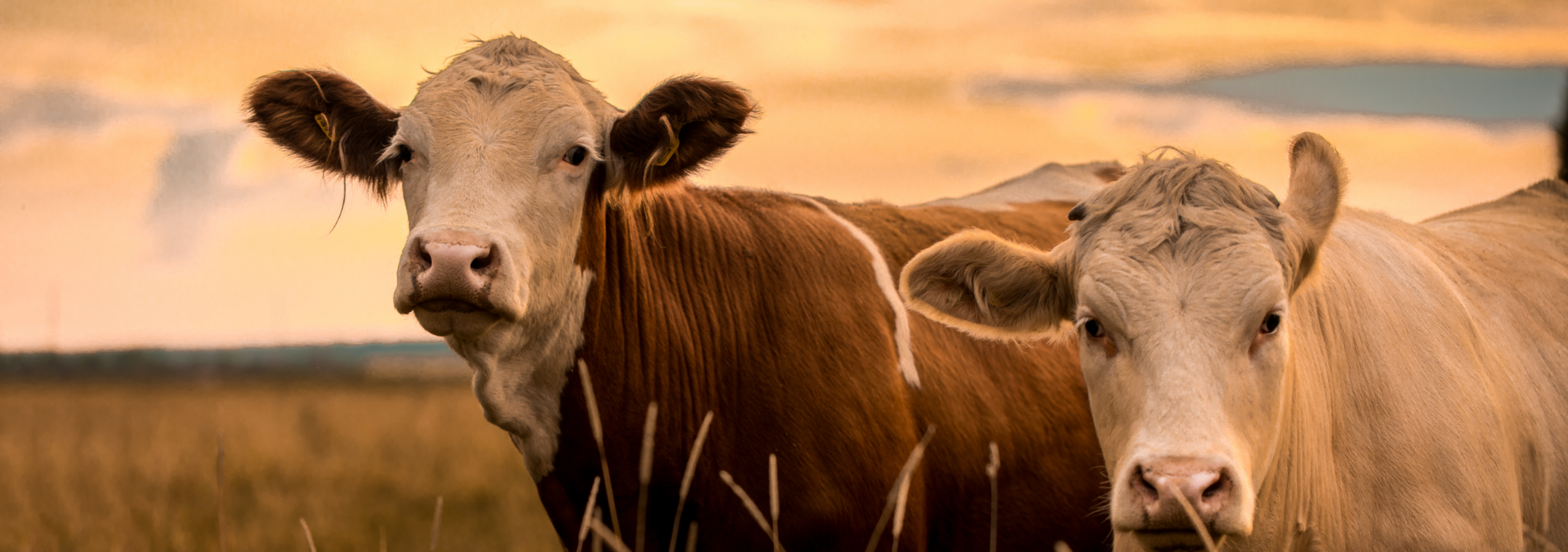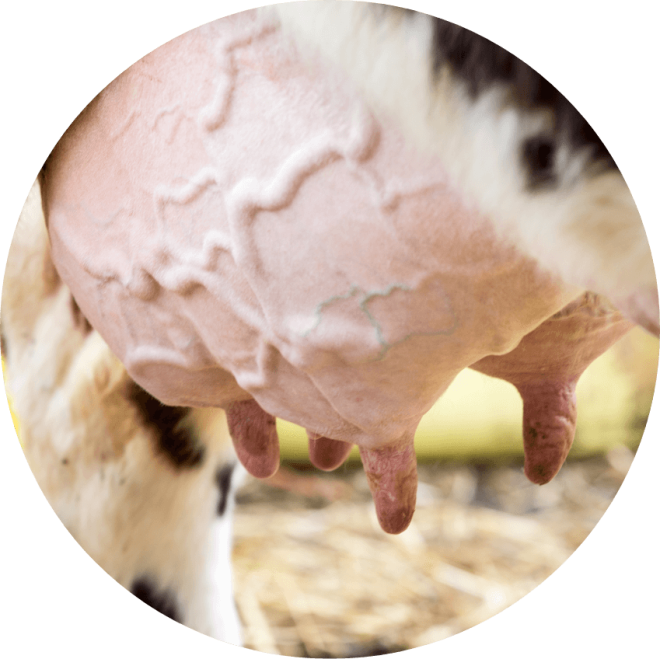Improving animal welfare
Pain management is essential for maintaining the health, well-being, and productivity of beef and dairy herds. By ensuring that animals are free from unnecessary pain and discomfort, producers can improve animal welfare, enhance product quality, and maximize the economic success of their operations.
Recognizing the signs of pain, and understanding conditions and procedures that require intervention, are crucial components of effective pain management in beef and dairy herds.
Below are some of, but not all, the conditions and procedures that may be painful for cattle and for which you might consider pain control. Non-steroidal anti-inflammatories drugs (NSAIDs) can provide pain relief in addition to controlling inflammation. They are one of the few pain management drugs currently approved in Canada for cattle. Working with your veterinarian can help identify the best pain management plan for your herd.
Calf Care
The first few months of a calf’s life are critical to the animal's health, development and long-term productivity. Proper management of pain is the right thing to do, not only to reduce the animal’s pain and suffering but also to give them the best chance at reaching their full potential.
Diarrhea, disbudding, and castration are some examples of situations where pain can occur.
Diarrhea
Diarrhea in beef and dairy calves can lead to dehydration, weight loss, reduced growth and even mortality. Regardless of what it is caused by – whether it is infectious agents (viruses, parasites and bacteria) or non-infectious ones like indigestion – diarrhea will cause discomfort to the calf.
Research has demonstrated that anti-inflammatories can be beneficial to calves with diarrhea as supportive care in addition to oral rehydration. They ate more, were easier to feed and grew more than calves not receiving anti-inflammatories.1
Disbudding
All methods of disbudding – cautery or caustic paste2-4 - will cause acute and chronic pain in the calf. This can be minimized by disbudding as early as possible and using pain management. The Codes of Practice for the Care and Handling of both Dairy and Beef cattle require that disbudding occur before three months of age. Disbudding should be done only when the appropriate anesthetic and pain control are used.5-6
Castration
All methods of castration – surgical (knife) or non-surgical (band or burdizzo) - will cause pain and distress to the calf, but this can be minimized by castrating as early as possible and using pain management. The Canadian Code of Practice for the Care and Handling of Beef Cattle indicates that pain mitigation must be used when castrating bulls older than six months of age.5
Lameness
Lameness in cattle can cause significant pain and have detrimental effects on their well-being and productivity. Pain associated with lameness can lead to reduced mobility, weight loss, and decreased milk production in dairy cattle. At an estimated cost to producers of $336 per cow, lameness is considered the third most economically significant health problem in dairy herds.10 Depending on the underlying cause, treatment may involve hoof trimming, elevation of the healthy claw (block), antibiotics for infections, or surgical interventions. Pain control, in addition to these measures, can help improve cow welfare.
Bovine Respiratory Disease
Bovine respiratory disease (BRD) affects health, welfare and productivity at every stage of life. It costs the cattle industry an estimated $900 million annually in death loss, reduced feed efficiency and treatment costs.11
BRD can be an insidious disease, and not every animal affected by it will show signs of infection. In addition to fever, sickness syndrome and difficulty breathing, these animals may have lifelong lung damage that can impact future health and productivity. Research has shown that pneumonia can also be painful for cattle, as demonstrated by reduced activity levels, decreased weight on front limbs, and an increase in pain scores.12
When considering BRD treatment options it is recommended to work with your veterinarian to develop a treatment protocol that is tailored to your herd.
1. Todd CG, Millman ST, McKnight DR, Duffield TF, Leslie KE. 2010. Nonsteroidal anti-inflammatory drug therapy for neonatal calf diarrhoea complex: Effects on calf performance. J Anim Sci.88:2019-2028.
2. Heinrich A, Duffield TF, Lissemore KD, et al. The impact of meloxicam on post-surgical stress associated with cautery dehorning. J Dairy Sci 2009;92(2):540–547.
3. Winder CB, LeBlanc SJ, Haley DB, Lissemore KD, Godkin MA, Duffield TF. Clinical trial of local anesthetic protocols for acute pain associated with caustic paste disbudding in dairy calves. Journal of dairy science. 2017 Aug 1;100(8):6429-41.
4. Reedman CN, Duffield TF, DeVries TJ, Lissemore KD, Karrow NA, Li Z, Winder CB. Randomized control trial assessing the efficacy of pain control strategies for caustic paste disbudding in dairy calves younger than 9 days of age. Journal of dairy science. 2020 Aug 1;103(8):7339-50.
5. The Code of Practice for the Care and Handling of Beef Cattle https://www.nfacc.ca/pdfs/codes/beef_code_of_practice.pdf. Accessed on April 11, 2024.
6. The Code of Practice for the Care and Handling of Dairy Cattle. https://www.nfacc.ca/pdfs/codes/dairy/DairyCattle_23_FINAL.pdf. Accessed on April 11, 2024.
7. Barrier, A. C., Coombs, T. M., Dwyer, C. M., Haskell, M. J., & Goby, L. (2014). Administration of a NSAID (meloxicam) affects lying behaviour after caesarean section in beef cows. Applied Animal Behaviour Science, 155, 28-33.
8. Murray, C. F., Duffield, T. F., Haley, D. B., Pearl, D. L., Veira, D. M., Deelen, S. M., & Leslie, K. E. (2016). The effect of meloxicam NSAID therapy on the change in vigor, suckling reflex, blood gas measures, milk intake and other variables in newborn dairy calves. J Vet Sci Anim Husb, 4(1), 103.
9. Gladden, N., Ellis, K., Martin, J., & McKeegan, D. (2021). Administration of ketoprofen affects post‐partum lying behaviours of Holstein dairy cows regardless of whether parturition is assisted. Veterinary Record, 189(6), no-no.
10. Robcis, R., A. Ferchiou, M. Berrada, Y. Ndiaye, N. Herman, G. Lhermie, and D. Raboisson. 2023. Cost of Lameness in Dairy Herds: An integrated bioeconomic modeling approach. J Dairy Sci. 106:2519-2534.
11. USDA. 2017. Cattle and calves death loss in the United States due to predator and nonpredator causes, 2015. Fort Collins, CO: USDA–APHIS–VS–CEAH.
12. Martin MS, Kleinhenz MD, White BJ, Johnson BT, Montgomery SR, Curtis AK, Weeder MM, Blasi DA, Almes KM, Amachawadi RG, Salih HM, Miesner MD, Baysinger AK, Nickell JS, Coetzee JF. Assessment of pain associated with bovine respiratory disease and its mitigation with flunixin meglumine in cattle with induced bacterial pneumonia. J Anim Sci. 2022 Feb 1;100(2):skab373. doi: 10.1093/jas/skab373. PMID: 34932121; PMCID: PMC8849227.



